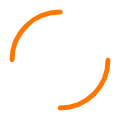Patient information
Patient information
These points should be discussed in the informational meeting with the patient before surgery.
Home drainage
After implantation and the subsequent monitoring period, the drainage system allows the patient to be discharged back home. He no longer needs to visit a clinic for puncture due to recurrent pleural effusion or ascites and associated symptoms.
He himself, his relatives or nursing services can perform the drainage after training by an ewimed training staff member (at the patient’s home).
The catheter - product description and use
This is a thin, soft silicone tube that lies under the skin, grows in at the skin exit site and does not need to be changed. At the visible end there is a safety valve with a protective cap. In unused condition, this valve is closed.
The catheter is fixed to the body with a bandage and can be worn inconspicuously under clothing. This gives your patient maximum freedom of movement, as a drainage system only needs to be connected temporarily for short-term drainage.
Training in handling the drainage system
Our training personnel show the patient, his relatives or the nursing service how to use the home drainage set provided for this purpose at his home shortly after discharge from the hospital.
Home drainage kits are brought to the training by the training staff. After instruction, your patient or their caregiver will be able to operate this drainage set.
View all home drainage products now.
Aftercare and prescriptions
Home drainage kits are prescribed by the primary care physician. Please inform your patient that, depending on the drainage interval (according to your doctor’s orders), he/she must seek a follow-up prescription for the drainage material from his/her family doctor in good time.
Of course, we are always available to answer any questions you and your patient may have.
We are happy to provide you with our patient information sheet for the patient interview as well as a list of frequently asked questions.




